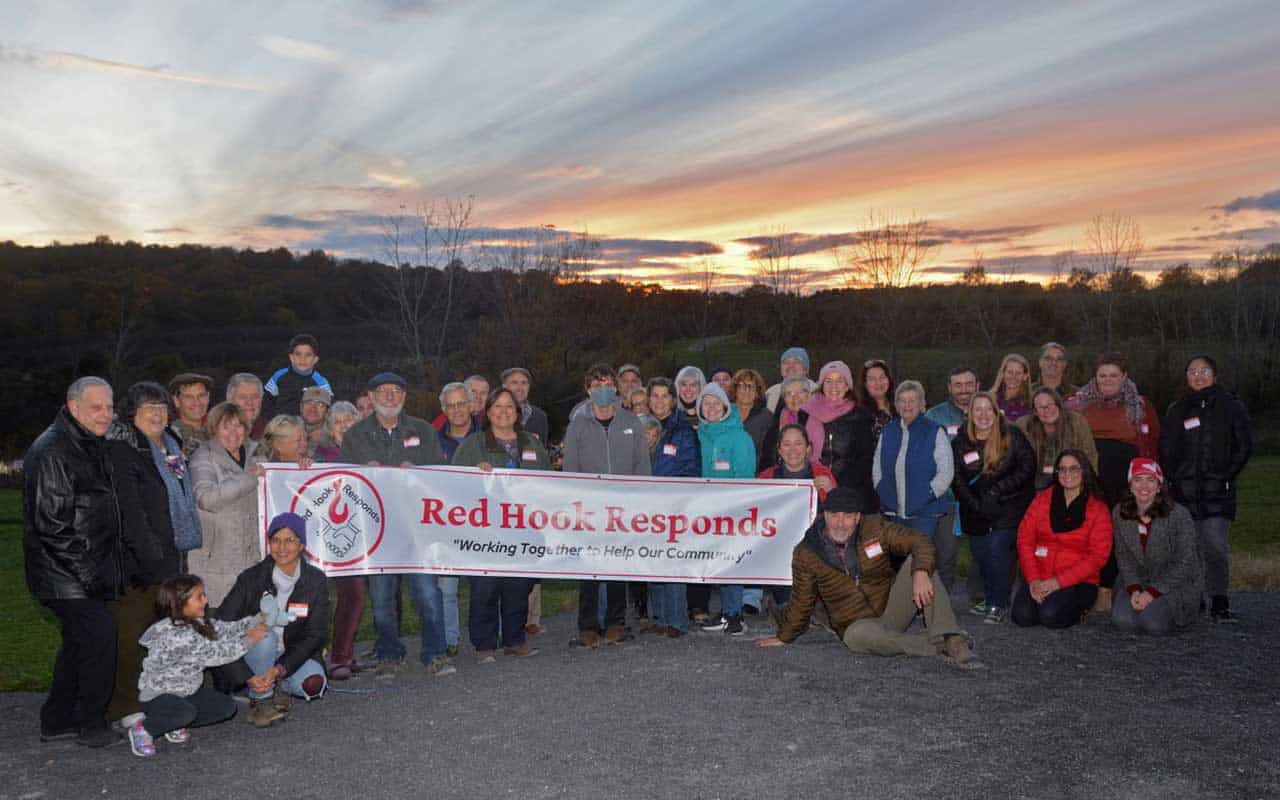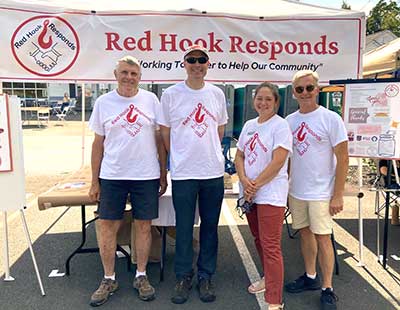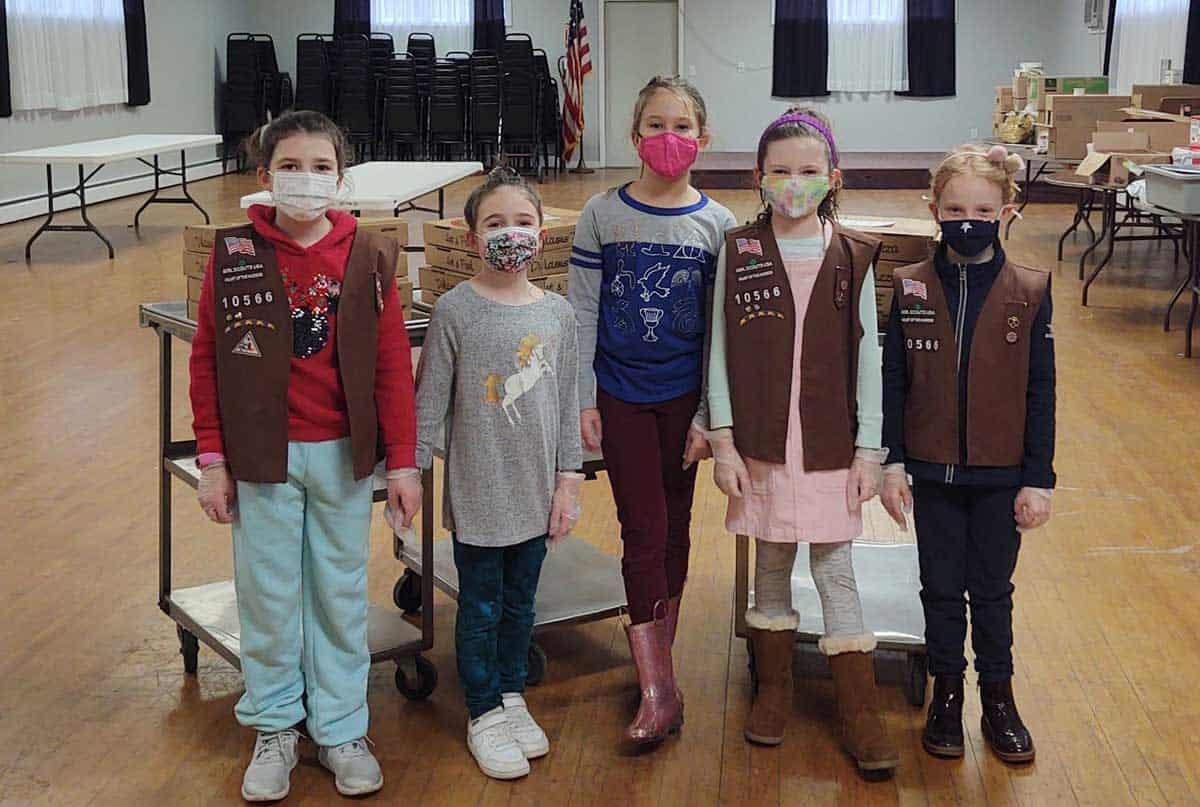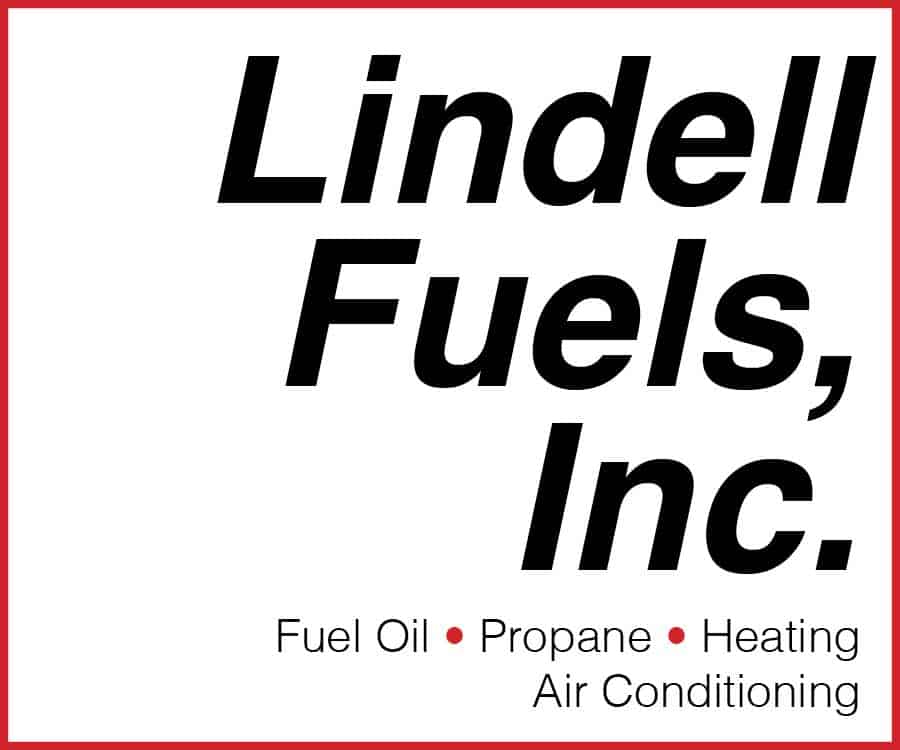This Month’s Featured Article

Red Hook Responds
 By its very nature, volunteerism requires a sense of commitment often hard to come by. With families, careers, and the financial stress of “keeping up,” it can be hard to find time to volunteer. As the holidays approach, non-profit organizations look forward to the time of year when volunteerism typically sees a dramatic increase. However, studies show there has been a sharp decline in volunteer efforts since the COVID-19 pandemic. According to a study by Fidelity Charitable, an independent public charity and the nation’s largest grantmaker, data suggests that the nation’s charitable organizations may be facing shortages. The study revealed, “Two-in-three volunteers decreased or stopped contributing time due to the pandemic. Of those who continued to volunteer, two-in-three turned to virtual or remote opportunities, compared to 81 percent of people who volunteered in-person before the pandemic. Sixty-four percent of those who hadn’t tried virtual or remote volunteer activities weren’t sure how to find them.”
By its very nature, volunteerism requires a sense of commitment often hard to come by. With families, careers, and the financial stress of “keeping up,” it can be hard to find time to volunteer. As the holidays approach, non-profit organizations look forward to the time of year when volunteerism typically sees a dramatic increase. However, studies show there has been a sharp decline in volunteer efforts since the COVID-19 pandemic. According to a study by Fidelity Charitable, an independent public charity and the nation’s largest grantmaker, data suggests that the nation’s charitable organizations may be facing shortages. The study revealed, “Two-in-three volunteers decreased or stopped contributing time due to the pandemic. Of those who continued to volunteer, two-in-three turned to virtual or remote opportunities, compared to 81 percent of people who volunteered in-person before the pandemic. Sixty-four percent of those who hadn’t tried virtual or remote volunteer activities weren’t sure how to find them.”
Creating volunteer portals
To combat this fragmentation, organizations like Red Hook Responds (RHR) in Red Hook, NY, are centralizing efforts to meet the needs of their community. The mission of this new organization is to coordinate, enhance, and support the existing and new volunteer efforts in the Red Hook area. It harnesses volunteers in a centralized location where people work together to maximize the programs already in place. RHR has created a volunteer portal that places volunteers with appropriate programs based on skills and interests and improves communication between groups within the community doing similar volunteer efforts. Jeung-Il Tsumagari-Coon, RHR’s executive director feels it is her duty, as a mental health counselor, to aid her community in keeping up with their health- however that may look. She reflects on the organization’s origins and what may be in store for the future of coordinated volunteer efforts in the Red Hook area.
How did the idea of Red Hook Responds come about? Was there a moment of realization that all volunteer efforts should come together?
Red Hook Responds came about when one neighbor contacted another after a call-to-action from local business owner and chef Dan Budd. He and Christopher Donahue (then a senior in high school) put ideas together to found what was initially a Covid response effort. It was inspired by needing to see good happening in the world, starting with the community in which we live – rural Red Hook, NY.
What volunteer efforts have been brought together? How many charitable branches of service does Red Hook Responds have?
RHR began as a way to check-in on folks stuck in isolation, send meals to anyone in need, or help gain access to groceries from the store, we were just trying to help meet needs as they rapidly arose. Dan Budd realized quickly that people within the community would need to work together effectively, so he helped to develop a communication platform from which to do that.
RHR established a helpline within weeks of the virus spreading. That is where I started my work with RHR. Christopher and I are previous employees of Chef Budd as well as members of the same community. I responded to his call-to-action to help ease my anxiety at the time and to build my role within the community as an advocate for mental health. Together we helped to train helpline operators, shift leaders who coordinate things like meal delivery, pharmacy and grocery assistance, and neighborly chats as well as volunteers ready to act. Eventually, RHR became one of the only meal programs (soup kitchen designation) in a 50-miles radius and one of only three listed for Dutchess County. It also generated a local food exchange in response to food rescue needs brought about by Covid. These are the two largest programs in operation today and are the foundation for how RHR hopes to continue into a more sustainable future.
What are some of the greatest challenges Red Hook Responds faces? Does having one centralized waypoint help to alleviate some of those challenges?
The greatest challenge for RHR currently is strengthening our presence within the community. We know that food security was an issue pre-pandemic and will continue to be one in the future, however, we are still trying to figure out what the best way to go about making our resources even more accessible. Another challenge, which any non-profit faces, is the constant need for volunteers. Many folks who signed up with RHR (a total of 725 right now!) engaged in very brief ways as was the nature of many pandemic-related actions within the past 18 months. RHR wants to strengthen awareness of food sovereignty in our community as well as the areas around us while also providing opportunities for folks to be active in the necessary work. Right now, we are trying to learn how best to go about that.
How important is volunteerism in rural communities – especially considering the challenges many families face today?
Volunteerism is the difference between needs being met or not. While many resources are available to those in need within a community, there are plenty of obstacles that get in the way of access. Volunteerism helps to ease this accessibility because of the human relationships it builds. Charity is not part of what RHR wants to do – there is a lot of that happening within our community. What I think we need is a way for people to build connections with one another along with the food that exists in their lives as well as the lives of those around them.
Something that I know Dan Budd will attest to is how the individual alone cannot be the answer to something like food sovereignty. This takes a community response, a collection of ideas and inspiration, as well as a sense of familiarity with one another that comes from the work done together.
How far-reaching do you see efforts like yours going? Do you see other communities in our area following a similar model?
Red Hook Responds began collaborating with Rhinebeck (one of our neighboring towns) to help them initiate similar efforts for their community. While we still have much to learn, we see RHR as a unique operation that provides a different way to organize around something like food access.
Something exciting to share is how RHR has been gifted a mobile kitchen that will expand upon the ways volunteers and the community-at-large can work together to address food sovereignty. This mobile kitchen (which is currently looking for a docking station while production is slowly being completed) can serve as a place to process and cook locally rescued foods, to gather around food and share ideas, shifting the narrative about food security while continuing to provide meals to the community.
Are there any plans currently to pursue other forms of community support?
RHR is in the process of building a donor database which involves thanking the philanthropic contributors within our surrounding community, receiving our non-profit status as a 501(c)3, and strengthening our fundraising efforts by establishing a strategic plan to move us into the future. At its conception, RHR had the support of local governments which allowed volunteers to operate with a safety net. We have collaborated closely with Robert McKeon, Ed Blundell (the former mayor), and now Karen Smythe all of whom have seen the need and benefits of having a volunteer organization help to address food security within Red Hook. We hope that having such strong support in our foundation will continue to afford us the resources necessary to build something sustainable for the community.
How can one become involved with Red Hook Responds? How has the response from the community been?
One can become a volunteer by visiting our website at www.redhookresponds.org and selecting our “Volunteers” tab on the home page. We have done our best to create a handbook, complete with guidelines and training, as well as establish a network of volunteers who are deeply committed to RHR. The operations supervisors (Suzanna Hermans and Alex Wolf) work closely with people in the community as well as volunteers seeking to sign-up. Our volunteer screening team works regularly to process new volunteers after they complete a Google form-based inquiry. References are required as well as civil rights training, but depending on what one might be able to offer their community, this can range from a variety of remote work to in-person efforts.
The response so far from the community has been overwhelmingly supportive! As previously mentioned, we have 725 volunteers who have signed up through our volunteer scheduling system (VSP), with 104 who are currently active. About 25 of those volunteers are scheduling more than ten hours a month sharing a strong commitment to making volunteerism a part of their everyday lives. Others help out when their schedule affords them the extra time and energy to do so.
For more information on how you can become involved with Red Hook Responds, visit redhookresponds.org.



